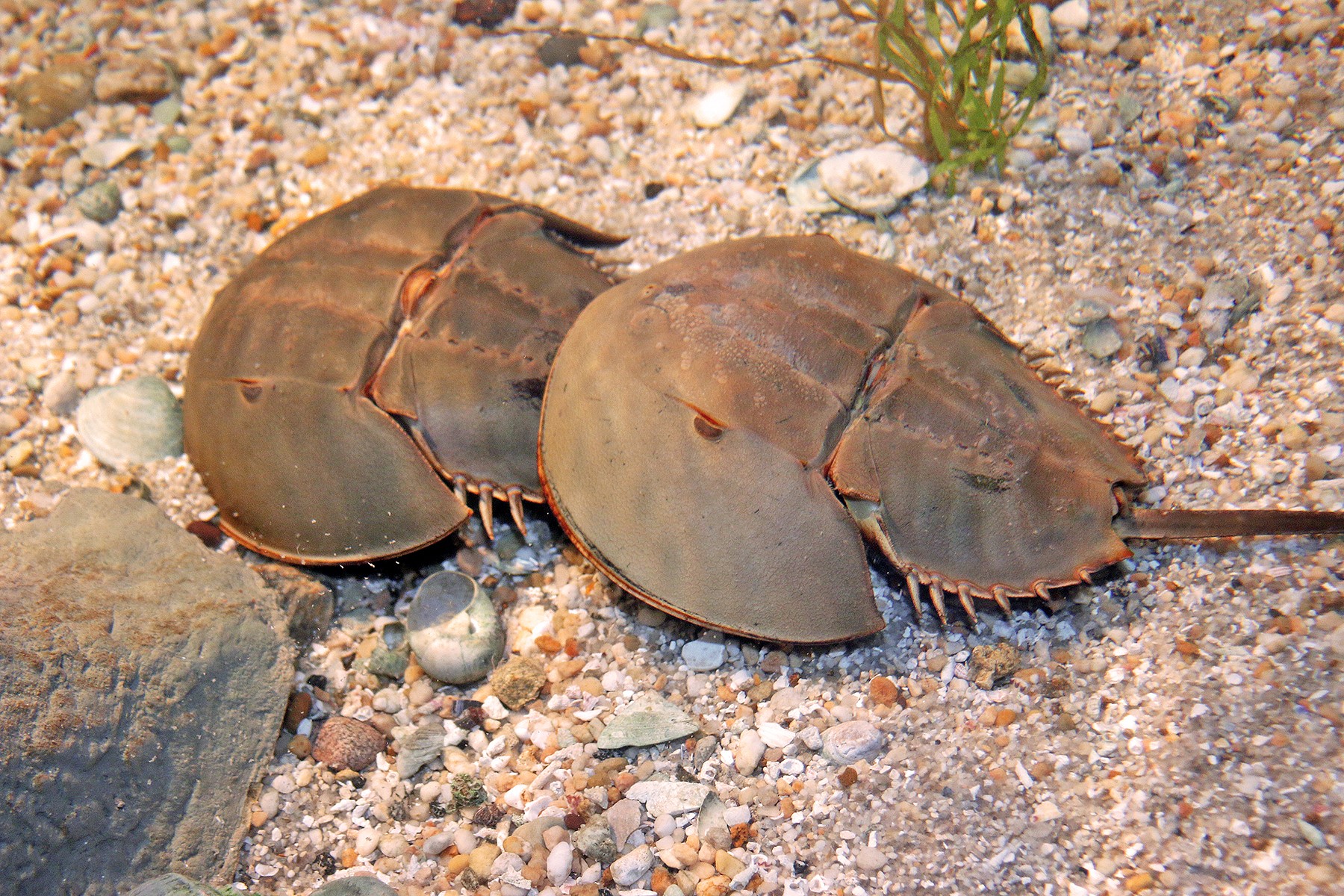
Training Sessions April 26 & May 7 at The Maritime Aquarium at Norwalk
One of nature’s oldest annual – but G-rated – mating rituals is about to occur again on the beaches of Connecticut, and The Maritime Aquarium at Norwalk needs help documenting it.
During the new and full moons each spring, horseshoe crabs come up out of Long Island Sound to spawn in the sand. For researchers working on a horseshoe crab census, that’s a bonanza time for data collection … so much so those citizen-scientist volunteers are needed.
To help out, volunteers first must attend one of two free training sessions at The Maritime Aquarium: at 7 p.m. on either Thurs., April 26 or Mon., May 7. They’ll learn about the natural history of horseshoe crabs, about the census, and how to harmlessly tag the crabs. Volunteers should be in 10th grade or older. Younger children can assist if working with a parent, teacher or guardian. (If you’ve helped tag crabs before, you don’t have to attend the trainings. But please register for the crab taggings.)
Volunteers must be able to be out after midnight for the crab-tagging sessions at Calf Pasture Beach in Norwalk on select nights in May, June and July.
“This is a perfect citizen-science activity for parents and kids to do together; to step into the middle of this natural occurrence that been’s happening for millions of years, and to also be playing a scientific, helpful role in it,” said Aquarium spokesman Dave Sigworth. “The taggings especially give teens interested in careers in marine biology a real taste of what the work is like.”
Survivors from the Paleozoic Era – and looking every bit the part – horseshoe crabs are commercially harvested for bait and for use in the pharmaceutical industry. (A derivative from the crabs’ blood is used in medical testing. Crabs are returned to the water after their blood is drawn, but not all crabs survive.) The Atlantic States Marine Fisheries Commission has established quotas on how many crabs can be harvested from each state. In Connecticut, the Department of Energy & Environmental Protection set limits on when, where and how the crabs can be harvested, in an effort to stabilize and restore the population.
To sign up or for more details about the trainings and taggings, go online to www.maritimeaquarium.org/citizen-science.
If you’ve helped tag horseshoe crabs before, you don’t need to attend a training. But please call or send an email to sign up for one of the tagging sessions at Calf Pasture: (203) 852-0700, ext. 2281, or e-mail bcervero@maritimeaquarium.org.